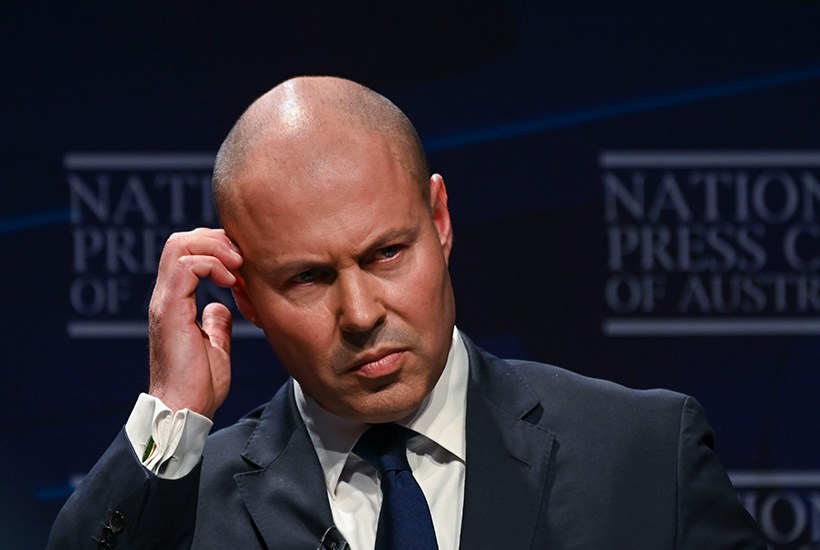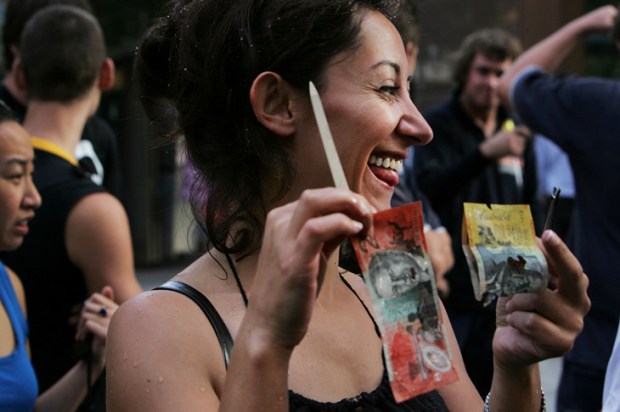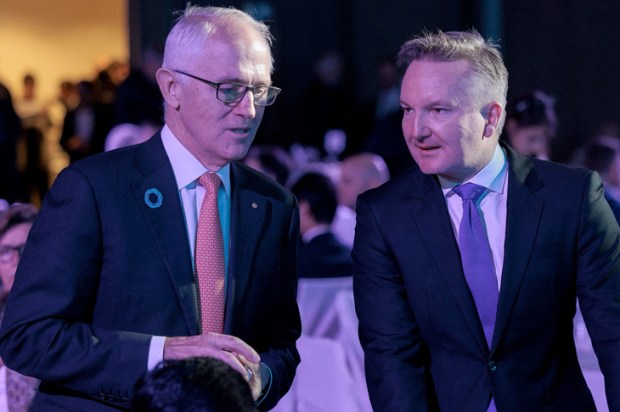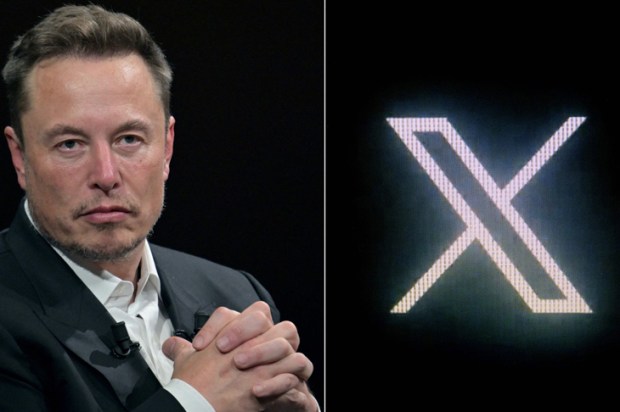The best thing about the federal Budget this year is that it was done and dusted before April Fool’s Day. Normally, it’s held in May when the wintry weather has descended on Canberra and it’s a trip most normal people would pay to avoid.
Mind you, Albo and his buddy, Jim – Chalmers that is – are promising another Budget before the year is out. That’s reason enough not to vote Labor.
Many people think I should be interested in the Budget – as an economist, Judith. The reality is that the Budget contains very little economics; it’s really about politics, theatre and what the government of the day thinks it can get away with.
But before I tell you what I really think about this year’s Budget, the one that is intended to see the Coalition re-elected, let me describe one theatrical aspect of the Budget – the annual lockup.
Since Covid, the lockup arrangements have been decentralised – thank God. No longer is everyone jammed into the bowels of Parliament House. Rather, arrangements are made by each media outlet to house their staff in the major capital cities.
Not only does this save money, it also adds a sense of blessed relief for those whose job it is to quickly comment on the thousands of pages that are dumped onto computer screens from around 1 pm on the day of the Budget. Sure, we are still locked up until the Treasurer rises in the house to deliver the Budget at 7.30pm. But we can all then flee in the hope that someone has put the kettle on at home.
As a result I’ve decided to decommission my orange jumpsuit. The lockup for me is now less like imprisonment, more like being stuck at an unpleasant event – an interminable lecture, a school speech night, a graduation ceremony.
I did make the mistake this year of leaving my run to the food counter too late. By the time I got there, the only remaining ‘delicacies’ were vegan sausage rolls and bread rolls filled with tofu and salad. (Is there such a thing as a vegan sausage roll?)
For some strange reason, there is always a plentiful supply of lollies and chocolate which makes me wonder whether the person who organises the catering is married to a dentist. But let me get back to the Budget itself. Of course, the government wanted to use the opportunity to enhance its chances of re-election. Duh. But there were some constraints.
The economy is now running at close to full capacity which means that any addition to demand – from cash handouts, for example – runs the risk of simply fuelling inflation. The same can be said for extra spending on infrastructure where the shortage of workers and the escalating cost of materials have already been creating problems.
But it gets worse – if additional government spending does fuel inflation, something the Treasury desperately wants to downplay, then the Reserve Bank may raise interest rates earlier than expected.
What this would mean is that for the millions of mortgage holders, there could be a substantial hit to the family budget, adding hundreds of dollars to the monthly expenses column. (There are an estimated one million mortgage holders who have never experienced an increase in interest rates, bearing in mind that the RBA has not lifted the cash rate since 2010.)
The trick for the Treasurer therefore was both to limit (slightly) and target the voter-friendly spending thereby avoiding blowing up the Budget settings. In this way, the hope is that inflation is made no worse and it’s possible to predict (small) growth in real wages.
But let’s be clear on this important matter: there are some strange sleights of hand in the Budget when it comes to these matters.
The Treasury had been working on the basis of a non-accelerating inflation rate of unemployment of 4¾ per cent. (Hang in there, it gets more interesting.). The NAIRU is the rate of unemployment below which inflation accelerates. Seeing we are currently at 4 per cent – thanks largely to the lack of overseas arrivals in 2020 and 2021 – it was necessary for Treasury to walk back from this figure and suddenly declare that a NAIRU of 3¾ per cent looks more like it. Not that there is much explanation of this politically convenient change. It could have been the vibe in Barton (where the Treasury building is located) at the time.
This then allows the Treasury to predict that while inflation will be 4¼ per cent this financial year, it will be 3 per cent next year and 2¾ per cent in 2023-24. In other words, there will be a temporary bout of inflation but it will quickly recede. Evidently, oil prices will have returned to their previous levels towards the end of this year because the Ukraine situation will be all sorted.
By predicting falling inflation rates after this financial year, the Treasury is able to squeeze some predicted real wage gains with projected annual wage growth of 3¼ per cent next financial year and the year after that. That’ll show you, Albo.
The optimistic forecasts on inflation are also important to the government’s narrative about the manageability of running constant deficits and dealing with rising government debt. In the medium-term forecasts, not one surplus is predicted for the period ending 2032-33.
The Budget Papers show that net interest payments on servicing the government’s debt increase from $15 billion in 2022-23 to $22.4 billion in 2025-26. But it’s OK because servicing costs are going to come down over the medium term – or so it is assumed.
Evidently, we should also feel grateful that government debt may not reach $1 trillion because the Treasury’s economic growth forecasts last year now look too pessimistic and by banging in rosier ones, it’s now only $900 bill or so – phew.
To the novice, the Budget Papers might look like a highly professional and convincing set of documents. The reality is that the figures are built on a set of assumptions which are made to please the government of the day. In this way, money can be spent – because the government ‘cares’, because it’s good for the economy – and the Treasurer has some camouflage. The biggest danger is that high spending is baked in based on faulty advice that is then politically impossible to reverse.
Got something to add? Join the discussion and comment below.
Get 10 issues for just $10
Subscribe to The Spectator Australia today for the next 10 magazine issues, plus full online access, for just $10.
You might disagree with half of it, but you’ll enjoy reading all of it. Try your first month for free, then just $2 a week for the remainder of your first year.














Comments
Don't miss out
Join the conversation with other Spectator Australia readers. Subscribe to leave a comment.
SUBSCRIBEAlready a subscriber? Log in